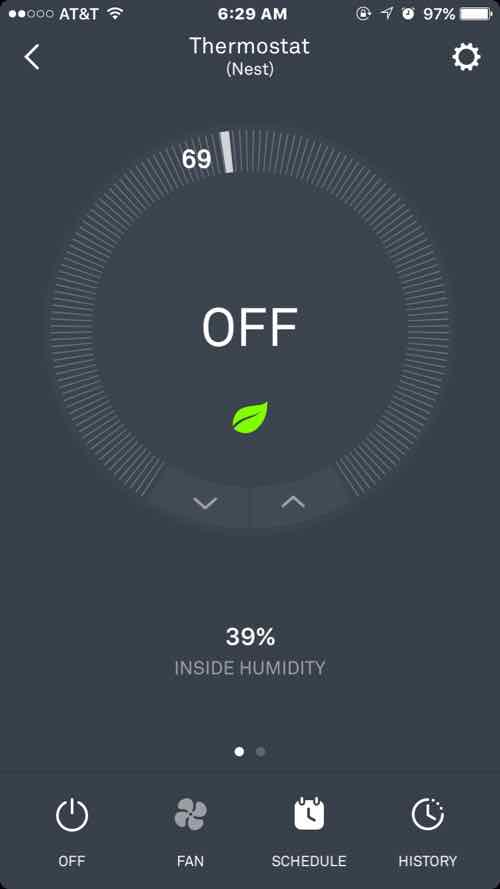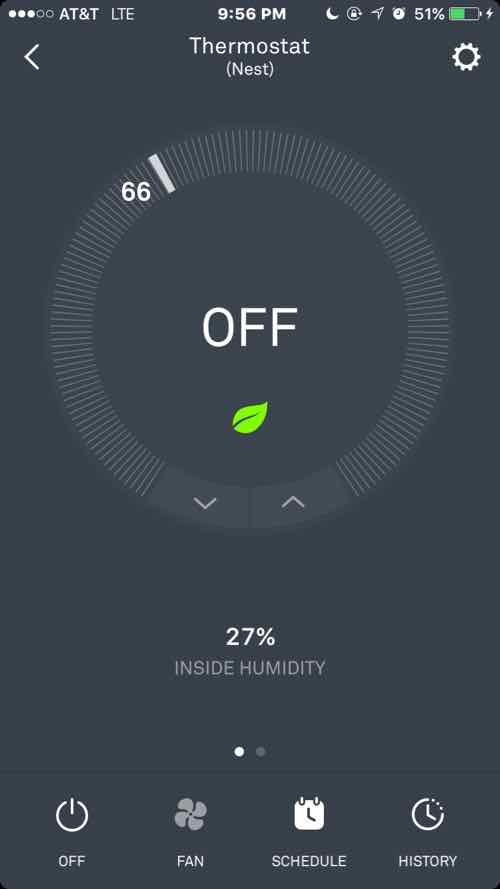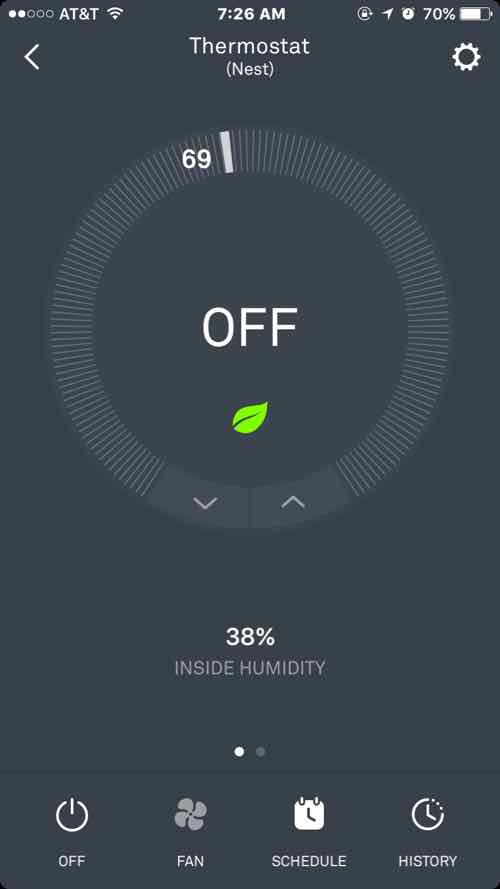Above-Average Temperatures, Humidifier Kept Us Comfortable During Winter
The past winter was the warmest on record, from March 8th:
The Lower 48 states had its warmest winter in 121 years of record-keeping, NOAA announced this morning.
Temperatures averaged over the country between December and February were nearly five degrees above the 20th-century average. Every state but two were warmer than normal and all six New England states set winter records. (Washington Post)
From the NOAA:
- The December–February average temperature across global land and ocean surfaces was 2.03°F (1.13°C) above the 20th century average. This was the highest for December–February in the 1880–2016 record, surpassing the previous record set last year by 0.52°F (0.26°C). December 2015–February 2016 also marks the highest 3-month departure from average for any 3-month period on record, surpassing the previous record set last month, November 2015–January 2016, by 0.16°F (0.09°C).
- The globally-averaged land surface temperature for December 2015–February 2016 was 3.47°F (1.93°C) above the 20th century average. This was the highest for December–February in the 1880–2016 record, surpassing the previous record of 2015 by 0.83°F (0.46°C). December 2015–February 2016 also marks the highest 3-month departure from average for any 3-month period on record, surpassing the previous record of November 2015–January 2016 by 0.70°F (0.40°C).
- The December–February globally-averaged sea surface temperature was 1.51°F (0.84°C) above the 20th century average. This was the highest for December–February in the 1880–2016 record, surpassing the previous record set last year by 0.40°F (0.22°C).
Though we had some cold spells, it didn’t seem as cold as last year. Here are the results from the non-scientific Sunday Poll:
Q: Winter is over, how were your heating bills compared to the previous winter?
- Substantially higher 0 [0%]
- Higher 0 [0%]
- Somewhat higher 2 [7.41%]
- About the same 6 [22.22%]
- Somewhat lower 6 [22.22%]
- Lower [7 25.93%]
- Substantially lower 6 [22.22%]
- Unsure/No Answer 0 0% [0%]
More than two-thirds reported lower heating bills. Our heating bill was substantially lower — it was zero! Yes, we went all winter with our HVAC system turned off. Our loft has three floors below and above, plus units on each side. With windows only on one side, we’re well insulated. An advantage of multi-family living.
For comfort I worried more about the inside humidity level — dry Winter air feels colder.



Many sites suggest 40%-60% relative humidity for healthy air quality, but that depends on the outside temperature:
If outside temperature is 20 to 40 degrees, humidity indoors should not be more than 40 percent. (Source)
In the Spring & Summer we do need to use air conditioning, but largely to lower the humidity. Eventually we’ll get a dehumidifier.
— Steve Patterson
Life is much better without high utility bills.Since moving to Frankfurt, our family of 5 has managed to use our electric-source heat only on a few days other than in Jan and February. Our annual temps there average between 35 and 75–similar to weather in Santa Monica, although temps seldom drop below 45 in S. Monica. Very rarely, temps will reach 83-85 in Frankfurt, which is still cool to me, having grown up in the deep South. While our home has AC-cooling (actually a heat pump), we’ve never turned it on for cooling, even during the warmest months of July and early August. Swamp coolers are typically used around Frankfurt in most houses. Our South facing windows are treated with a passive solar film that actually repels heat in the summer months, attracts it during winter. I think the film is manufactured by 3M. We have a whole-house humidifier which, as you noted, really helps during the winter months, but it is seldom used in Frankfurt because our highest humidity levels occur in Dec/Jan, lowest in May through June. We learned to use the humidifier selectively, because we went away for a week one time and forgot to lower the setting before we left, and returned to a near rain forest. I know a resident in Railway Lofts on Washington whose condo faces South and rarely uses heat. The brick knee-wall below the windows serve as a passive collector, releasing free heat 24/7.
If you were boiling water to increase humidity, you were using energy to heat your condo… and if using a gas stove, emitting a significant amount of carbon monoxide in the process.
Yes, I was using a burner on the stove — but our unit is 100% electric.
I assume your heating/cooling system is a forced air, closed hydronic loop system, and that your building is equipped with a communal boiler/cooling tower, which heats/cools the water in the system to a given temperature, then flows into your unit’s coil which your individual condo A/H system further cools or heats depending on the season, and then air from your unit’s system blows over the coils to distribute conditioned air to your space. That system allows efficient cooling/heating in retro developments like yours, minimizes wasted space for HVAC equipment, and provides a really efficient system for residents. Some condo developments in the Loft area use split systems, but they’re noisy when grouped together and tend to be less efficient due to the need to use longer line sets between the exterior condenser location and the interior air-handling location. My friend in Railway Lofts often just turns on his unit’s fan during milder weather conditions, and the conditioned loop water temperature provided by the condo ass’n provides plenty of conditioned air to maintain his unit.
No, the condos in both our buildings have convention individual forced air HVAC. Every A/C condenser in my building is on the roof, the other building has some on the roof and some in a vertical recess in an exterior facade. I know 10th Street Lofts has a communal heating system.